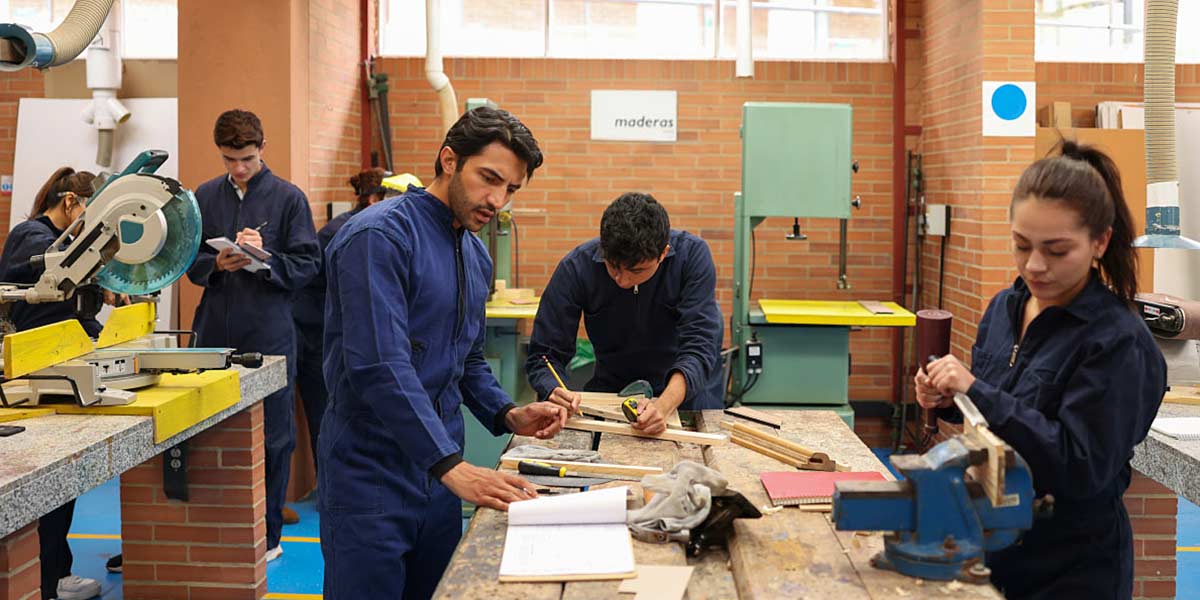Education for Life: From Wood and Metal to Semiconductors and Programming

At West Valley School District in Yakima, Washington, relevance rules.
Put another way, the district prioritizes “career and college preparedness,” says Superintendent Mike Brophy—the foundation of which is a comprehensive, cutting-edge career and technical education (CTE) program.
“We work hard to put our kids into a great position,” Brophy says.
Brophy and his team—including Christopher Nesmith, director of CTE, and Peter Finch, assistant superintendent for teaching and learning—have elevated and expanded West Valley’s CTE program. Thanks to opportunities the district provides, many West Valley students get a head start on their postsecondary path by earning college credit and/or certifications while still in high school. In fact, some students go directly from high school to machinist careers with Boeing that pay $55,000 a year and include a $20,000 education stipend.
People want to have a purpose, a reason to learn something. When adults seek out new knowledge, it’s because they have a problem they need to learn how to solve or an obstacle to overcome. In West Valley schools, our philosophy is to teach kids what they need to learn so that they will have successful lives, and it’s surprising how motivated that makes them.
—Christopher Nesmith, director of career and technical education at West Valley School District
Shift in Mindset
West Valley’s CTE program once consisted of a few courses in areas such as wood and metal shop. Over the last few years, with an emphasis on getting students ready for career and college, the district has garnered state and national recognition for its dual-credit, certification and apprenticeship programs.
Today, high school seniors can participate in a 360-hour sequence of courses aligned to federal Perkins indicators of performance, which includes spending three hours a day at a work site for on-the-job training. In the process, students earn high school and college credits (as well as a wage), and they work toward industry certifications, ranging from receiving Microsoft Office Specialist certification in the middle grades to earning journeyman credentials and certification by the end of high school.
“We’re not a regular welding program where kids build a fire pit, for example,” Nesmith says. “In our program, students become certified welders through the American Welding Society.”
Strategies for Expanding CTE
West Valley has partnered with various individuals and organizations to grow its CTE program, and it continues to work hard to ensure its offerings are meeting both industry and student needs.
Here are some of the district’s key takeaways for developing and strengthening CTE programs:
Move Exploratory Courses to the Middle Grades
Traditionally, CTE students take career exploration classes in high school. At West Valley, these classes are taken in grades 7 and 8. This way, students already know what areas interest them when they get to high school, which helps them choose what preparatory opportunities they want to pursue (dual-credit courses, certification programs, apprenticeships, etc.). Each year, 100 percent of students at the district’s junior high school participate in CTE courses, and as of April 2018, 40 percent of students in grades 7 and 8 have earned industry certification through the Microsoft Office Specialist certification program. (An article from 2017 describes the program.)
Get Academic Teachers Involved
Many of the district’s academic teachers receive CTE certifications, and high school teachers do job shadowing at the same sites as students. This allows them to better tailor their instruction to what students need to know in the field. In addition, it helps assure work site managers that schools are focused on teaching students what they need to know to thrive in the workplace.
Build Robust Advisory Councils
To make dual-credit, certification and apprenticeship programs work, it is critical to partner with local businesses, colleges and community members. In fact, creating an advisory council is a requirement for federal Perkins funding. Nesmith works with other regional CTE directors to approach potential partners as a group. By widening their geographic reach, the districts access more opportunities for their students. It’s also easier to recruit new sites when multiple workforce and economic development councils are involved.
Align Programs Vertically
West Valley has eight career pathways (including early childhood education, health care and machining), and two more will be added next year. Vertical alignment of programs—from middle school to high school to certificates or postsecondary studies—is crucial to making it work. As mentioned earlier, students take career exploration courses in grades 7 and 8, and then they receive broad-area career counseling. Students finalize their choices in their junior or senior year of high school, when their 360-hour sequence of courses begins.
Explore Registered Apprenticeships
West Valley is one of two districts in Washington with registered apprenticeship programs. This allows 16- and 17-year-old students to run equipment at industrial sites (through a youth worker variance) and earn journeyman credentials and certifications. West Valley’s program arose from a partnership with the Aerospace Joint Apprenticeship Committee (AJAC), as well as local and state agencies and colleges. In addition to their regular teaching certification, high school teachers become certified through AJAC. They also make sure their classroom instruction meets the requirements for students to receive college credit—and succeed at their work site.
Set the Bar High for CTE Students
“We have a high standard,” Nesmith says. “Our duty is to maximize the potential of young adults and put them on the threshold of their future. We want kids to leave West Valley schools ready for the workforce and highly motivated.”
Learn more about Education Northwest’s services in CTE and other topics involving preparing students for their postsecondary pursuits on our Career and Technical Education page.



